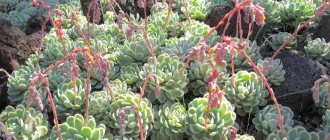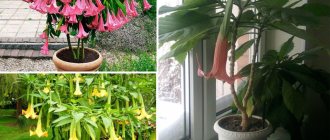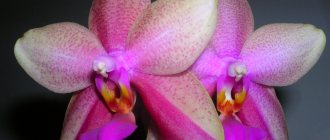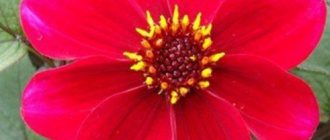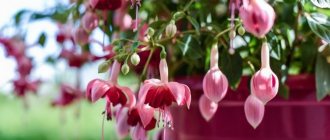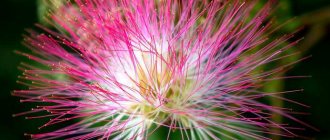Dalmatian chamomile, or pyrethrum, is an ornamental plant. Depending on the region of growth, it can be either perennial or annual. Its healing properties are much lower than those of medicinal chamomile, but its decorative properties are much higher. Pyrethrum is rarely used for therapy, but products based on this plant are used mainly to eliminate insects.
Features of culture
Chamomile is not demanding in terms of care, soil composition, and is frost-resistant.
Photo: biolib.cz Description and characteristics of the species:
- Dalmatian chamomile - pyrethrum cinerariaefolium (lat. Pyrethrum cinerariaefolium). Perennial herbaceous plant with a powerful root system. The central root can go 3 m deep into the soil.
- Under natural conditions it grows in Greece, Albania, Yugoslavia in mountainous, well-lit areas with calcareous soil. The traditional name of the Balkan countries is Dalmatia, which became the source of the species name of the plant.
- The height of the bush is 50-70 cm, some species can reach 1-1.5 m. The stems are numerous, densely leafy. Due to this, the base of the bush is thick and dense. The leaves are pinnately dissected. The underside of the leaf blades is fleecy, silver-gray in color.
- Single flower baskets are framed with reed petals. The center is bright yellow. The diameter of the flowers is 4-6 cm. The fruits are ribbed achenes of dark yellow color.
- Pyrethrum is drought-resistant and easily adapts to moist soils. But it tolerates prolonged waterlogging of the soil very poorly.
- Withstands negative temperatures down to -200C, but only in snowy winters. If there is no snow, it freezes quickly, since its lateral roots are located close to the surface of the earth.
- Externally, pyrethrum chamomile is very similar to pharmaceutical chamomile. But the flowers of the first are twice as large, the receptacle is flat, while the chamomile, on the contrary, has a convex, hemispherical middle. Despite the external similarity, chamomile and Dalmatian chamomile are two completely different species that belong to different classes. Pyrethrum is not used in folk medicine because it does not have the valuable healing properties characteristic of chamomile.
- Dalmatian chamomile is a natural insecticide. The plant contains poison that is absolutely safe for people and animals, but is destructive for synanthropic insects: ticks, cockroaches, fleas. Previously, powdered pyrethrum was sprinkled in the corners of rooms and placed under floorboards to protect against harmful insects.
Used for group plantings and bouquets.
Photo: eda-land.ru The author of the story tells how to use chamomile to protect against insects:
Components and biological activity of pyrethrum
The value of the crop lies in the fact that the entire green part of the plant is filled with special substances - pyrethrins. Most of them are found in flowers. A study of the chemical properties showed that these complex organic compounds include ketoalcohol, pyretoroline and chrysanthemum acid. A mixture of such substances causes an irreparable blow to the nervous system of invertebrates and rodents. As a result of exposure to the substance, the connection of nerve impulses is disrupted, which leads to paralysis and death of insect pests.
The structure of the molecules of the substance is different, therefore pyrethrin I and pyrethrin II are distinguished. Preparations made from natural insecticides often have a knockdown effect, leading to the immediate destruction of the insect.
Why did scientists choose Dalmatian chamomile? The fact is that the raw materials of this plant contain a huge amount of pyrethrins, which makes it possible to make the plant the basis for the production of natural insecticides. Closely related species, Persian and Caucasian, are similar in properties to Dalmatian chamomile. Although these species belong to the Pyrethrum family, they contain much less active ingredients than the Dalmatian variety.
It is important to know! Extraction of pyrethrins contained in Persian chamomile makes it possible to create more effective preparations against insects than preparations from raw materials of the Dalmatian species.
The flowering part of pyrethrum cinerariaefolium Trev also contains essential oils, glycosides, and fatty acids.
An important factor is the safety of pyrethrins for the human body. They are not absorbed into the skin, and when they enter the esophagus they break down into separate harmless compounds. The only unpleasant consequence of natural insecticides for humans may be an allergic reaction, and the toxic effect is aimed at invertebrates.
Today, natural pyrethrins have practically been abandoned. They are replaced by available artificial analogues - pyrethroids. The substance received its name after comparing its chemical composition. Artificial preparations act in the same way as natural insecticides. Penetrating into the body of an invertebrate, they strike the nervous system and cause instant death. In this case, a much smaller amount of artificial drug is used than natural one. Plants do not suffer after treatment with pyrethrins or pyrethroids, and the harvest is environmentally friendly.
When choosing between a natural and artificial drug, take into account the effectiveness of processing and safety for humans and nature. The natural substance is considered completely safe, although its effect on invertebrates is much weaker than that of pyrethroids.
It is important to know! Chemically derived pyrethroids are the “successors” of natural pyrethrins, but are considered more dangerous for humans and warm-blooded animals.
Dalmatian chamomile is grown to obtain material from which various insecticides are made. To do this, flowers are collected, ground to a powder, fillers are added and ready-to-use products are obtained. By infusing the powder in an aqueous or alcoholic solution, ready-made sprays are obtained to kill pests.
Dalmatian chamomile has been used as an insecticide since ancient times. It was always possible to buy “Persian powder” from Armenian merchants, which was used to poison cockroaches, fleas, lice and even rats. In historical notes you can find information that even in the army of Alexander the Great, pyrethrum was used to combat the invasion of lice and fleas.
Plant in spring and autumn
| Sowing seeds and growing seedlings Stages:
| |
| Caring for a plant in open ground Stages:
| |
| Pruning and preparation for winter Stages:
|
Rules for the preparation, manufacture and use of preparations from pyrethrum
In ancient times, healers used Dalmatian chamomile by drying the flower heads and carefully grinding them into a powder.
Natural raw materials need to be harvested at the moment the marginal reed flowers open in the basket. The harvesting process continues until the inflorescences are fully opened. Only the flowers or the entire green part are collected, depending on the purpose of the raw material. Equipment tuned to the desired method of collecting chamomile helps speed up harvesting. When harvesting inflorescences, only the crown is cut off. To harvest flowers and leaves, the bush is cut at the root.
Freshly cut flowers are left for a day just in the field to wilt a little. For this purpose, the mown grass is placed in small piles. Then the raw materials are taken and placed under sheds, in the attic, or passed through special dryers. It is important to monitor humidity levels and ventilation so that the raw materials dry evenly. For drying chambers, the acceptable temperature is no higher than +800 C. If the weather is dry, hot, it is not worth spending money on artificial drying. Grass quickly turns into hay on wooden mats under the sheds.
Dried chamomile is carefully ground into powder to obtain a ready-made product for killing insects in residential areas. Aqueous solutions are made from the finished powder to be sprayed in places where pests accumulate. Since natural pyrethrin breaks down quickly when exposed to light, it is not economically viable to use it outdoors.
Propagate by seeds and dividing the bush
Seeds
| |
Dividing the bush
|
Distribution and growth
In the wild, pyrethrum grows in mountainous areas. It is often found at 500-2000 m above sea level. This plant grows well on illuminated rocky, calcareous slopes. It is believed that the birthplace of this plant is the southern regions of the Balkan Peninsula.
It is also found growing wild in the mountainous areas of Altai, the Caucasus, southern Europe, Central Africa and Central Asia.
However, it has not been established whether pyrethrum is a representative of the local flora or whether the flowers were introduced to these regions. The spread of this plant was facilitated by human activity. Pyrethrum is now actively cultivated in countries with mild climates, including:
- USA.
- Italy.
- Bulgaria.
- France.
- Japan.
- Georgia.
In addition, the cultivation of these flowers as perennials is carried out in the south of Russia and Ukraine, in Turkey and some other regions.
Diseases and pests
| Powdery mildew Stages of the fight:
| |
| Slugs Stages of the fight:
|
Rules for growing at home
To grow a plant successfully, it is important to adhere to a number of agrotechnical rules.
Landing
This flower is considered very unpretentious. It can be planted in a sunny area or in partial shade. It is important that the soil is well drained. The flower does not tolerate stagnant moisture.
It is recommended to carry out planting work after frosts. It is best to do this in the spring directly in open ground.
Some time after planting, small bushes should be planted at intervals of 20-30 cm.
Care
In order for the plant to develop normally, it is important to remove weeds from the garden bed and thoroughly water the crop.
The soil around the bushes should be loosened periodically. This will help avoid crust formation, especially after precipitation.
By the time cold weather sets in, the plant needs to be trimmed and insulated with peat or spruce branches. This will help the chamomile endure the cold.
Dalmatian chamomile should be watered sparingly
Reproduction
Most often, pyrethrum is propagated in the following ways:
- dividing bushes;
- cuttings;
- seed method.
Pests and diseases
The perennial almost never gets sick. Pests are wary of this crop. Sometimes only she suffers from aphids.
To cope with parasites, you can use special chemicals. In advanced cases, the plant should be removed from the flowerbed.
A strong soap solution helps against aphids. If the colony is very large, you need to use insecticides.
Reviews from gardeners
Lyudmila62
I also like pyrethrums, only the red one remains, it has been growing as a compact bush for many years, and does not grow. I like the annual abundant flowering and unpretentiousness.
Source: www.forumhouse.ru
Tatyana R
I have also been growing pyrethrum for many years and it doesn’t require any special care.
Source: fialka.tomsk.ru
Dalmatian chamomile in the garden
Grown as an ornamental plant, this type of pyrethrum is very attractive in mixborders and gardens. No less popular are border plantings and touching daisy islands that enliven the stone scatterings of alpine hills. But the decorative nature of pyrethrum cinerarifolia is not the only advantage of the culture. It is also distinguished by the high toxicity of all parts: above-ground and root systems. The plant, which is completely harmless to humans, is poisonous to insects living in the garden, and therefore areas with pyrethrum plantings are always well protected from pests.
Mr. Summer Resident advises: pyrethrum in landscape design
Used in carpet-type flowerbeds for edging. In this situation, the bushes are trimmed to the required height and prevent the formation of buds.
They are also used to decorate borders. Bright colors improve the appearance of borders and mixborders.
This shrub is considered the most optimal for decorating a garden in a country style. This is explained by the fact that the flower looks great and takes root nearby with ornamental plants.
The flower is used to decorate loggias and terraces. It is also suitable for arranging bouquets.
Benefits of Natural Insecticides
Over time, synthetic analogues of pyrethrins were obtained - pyrethroids, which showed an even more powerful effect on insects.
However, recent years have passed under the sign of environmentally friendly agricultural production and people have begun to return to natural means of pest control. Pyrethrum has again become a popular insecticide and is widely used in green farming.
Natural insecticides based on pyrethrins are among the safest.
The active substances have a selective effect and are non-toxic to other animals, so they are often used to treat cages or enclosures in zoos, fur farms, and animal shelters. Natural insecticides can be safely used at home to protect indoor flowers or seedlings.
Pyrethrins degrade very quickly when exposed to direct sunlight into harmless compounds.
Such plants can be applied shortly before harvesting, rather than waiting several weeks until the products become safe for humans
.
Therefore, preparations based on natural pyrethrins are used both before and after flowering, and when the ovaries have already formed and the harvest is ripe. Another advantage of pyrethrins is their ability not to cause resistance (resistance) in insect pests, while almost all other insecto-acaricides suffer from this.
That is why it is recommended to change chemical insecticides every 3-4 treatments, and pyrethrum always remains an effective means of pest control and does not require replacement.
Collection of inflorescences and their proper drying
When growing Dalmatian chamomile to obtain Pyrethrum powder, it is necessary not only to obtain a rich harvest. It is important to dry it properly in order to subsequently produce a high-quality mixture. The technology for collecting and drying chamomile flowers must be given special attention. Collect inflorescences only on sunny days. Flower baskets freshly picked from the stems are immediately sent to specially prepared rooms for drying. Drying is done by spreading the flowers in a thin layer. During the procedure, the inflorescences are turned over several times to ensure uniform drying. It is important to prevent contamination by dust and soil and to avoid rubbing of the baskets during the drying period. It’s great if the inflorescences retain their natural color until the processing process. In the period between drying and direct preparation of the Pyrethrum mixture, the inflorescences should be stored in well-ventilated areas.


